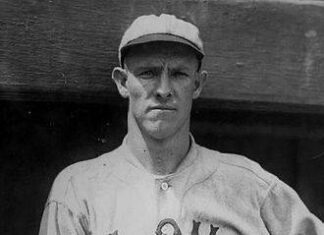Since 2014 the number of growers and planted acres has grown tremendously within the hemp industry.
In 2018 hemp was removed from the controlled substance list and deemed legal to grow; however there is a process. The process to grow hemp includes but is not limited to putting in an application that has the fields marked by Google Earth, a background check, and a processor who will purchase the harvest. In addition the Kentucky Department of Ag will test the THC levels and if they are too high in a crop then the field must be destroyed.
The processor that the farmer has a contract with has guidelines that farmers must follow. The good news is that Kentucky has over 120 processors which makes it the highest in the country; this means more accessibility for farmers and easier for selling purposes. According to Hemp Business Journal in 2017 there were over $820 million in sales of hemp or hemp products within the United States. The Hemp Business Journal estimates that by 2022 the hemp market could reach up to $1.9 billion while the Brightfield Group estimates the CBD industry to have $22 billion by 2022
There are three different things hemp can be grown for grain, fiber, and cannabinoids. Grain or seed contain 25-40 percent oil that are edible and high in protein. Other nutrients in the grain include omega-3 and omega-6, which is good for lowering blood pressure, preventing or managing heart disease among many other benefits. Hemp seed is edible and can be used for many things such as hemp coffee, toasted hemp seed, hemp seed oil, hemp four, and there are more products coming out as the interest among consumers grows.
Fiber can be used for many things but the need for the product has changed from centuries ago where the fiber was being used for rope, now rope is made with more modern technology but there is still a need for the fiber for other products. In the twenty-first century hemp fibers are used for some yarns, fabric, it can be an alternative for wood for particle-board, and replace synthetic fibers for molded injected plastics. Hemp plant varieties used for fiber can get 10 to 20 feet tall and produce 5.5 tons of fiber per acre.
Hemp to be grown for cannabinoids is produced for floral production, one important compound is CBD. CBD oil is sold for health purposes and can be very costly for one bottle. Hemp contains cannabinoid called THC which is what gives the high when using marijuana. When growing hemp for CBD the higher the percent of CBD the more profitable the crop becomes however the THC levels must be below 0.3 percent. If THC levels are above 0.3 percent it is considered illegal, because marijuana and hemp look, smell and grow the same way. Before farmers are to harvest the Kentucky Department of Agriculture comes to each farm to tell the levels of CBD and THC, if the THC level is above 0.3 percent then the crop cannot be harvested and must be destroyed. After the hemp is harvested the oil is extracted and used for a number of products for pharmaceutical and medical research. It is best to have only female flowers as female flowers that are not pollinated have the highest levels of CBD, for this reason some processors only want propagated plants.
Historically, hemp was grown in Kentucky in the early 1800’s since then it has been grown in other counties and shipped in to the United States. Hemp was the largest crop in Kentucky in 1850 being the largest producing state in the country. The crop is labor intensive and requires a lot of manual labor. After World War I many hemp farmers had a difficult time finding workers as slavery was no longer an option. In addition to farmers having to find and hire help they also had to compete with other countries who were shipping the crop in at a much lower price.
After World War I the hemp industry diminished but one of many reason was the passage of the Marijuana Tax act in 1937. The act was put into place because cannabis was being used not only for fiber but also consumed as an intoxicant, so of course the government wanted their share of the profit making a mandatory taxing on cannabis. There was a small time-frame where the government asked farmers to grow hemp during World War II, in Kentucky farmers grow it for seed, then farmers in northern states used the seed to grow fiber. In 1978 the Controlled Substance Act passed making all cannabis illegal to grow within the United States. As hemp became a past crop for all farmers there was still a need in the United States for the product so foreign countries took advantage of opportunity and increased their production.
It was not until 2018 that it became legal for farmers to grow hemp again in Kentucky as many farmers are hoping to take a piece of the cake. It was not an easy battle to legalize hemp again U.S. Senate Majority Leader Mitch McConnell of Kentucky along with many others pushed for hemp to go in the 2018 Farm Bill.
There has been many questions regarding how to grow hemp, The University of Kentucky Cooperative Extension service will be hosting a field day. The program will be held on July 19, starting at 10 a.m., located at Appelman Farm on 2625 Dutch Ridge Road, Augusta. The day will include looking at numerous agronomic issues surrounding this new hemp crop. Mr. Tom Keene with UK Plant and Soil Science Department will discuss some of the growing issues we are seeing at this time and make suggestions as we continue toward our first harvest of the crop. Dr. Nicole Gauthier, will discuss the current disease situation on the crop and any recommendations for management. Dr. Ric Bessin will help identify insects affecting the crop, and he will also discuss the process of getting pesticides approved for a new crop like hemp. Finally, Dr. Tim Strombou will lead a discussion on the technology and work being done to automate some of the task such as harvest and market preparation of the new hemp crop. All current growers and those interested in growing next year are encouraged to attend.
For more information or to sign-up to attend this free field day please contact Bracken, Fleming, Lewis, Mason or Robertson County Extension Office.





